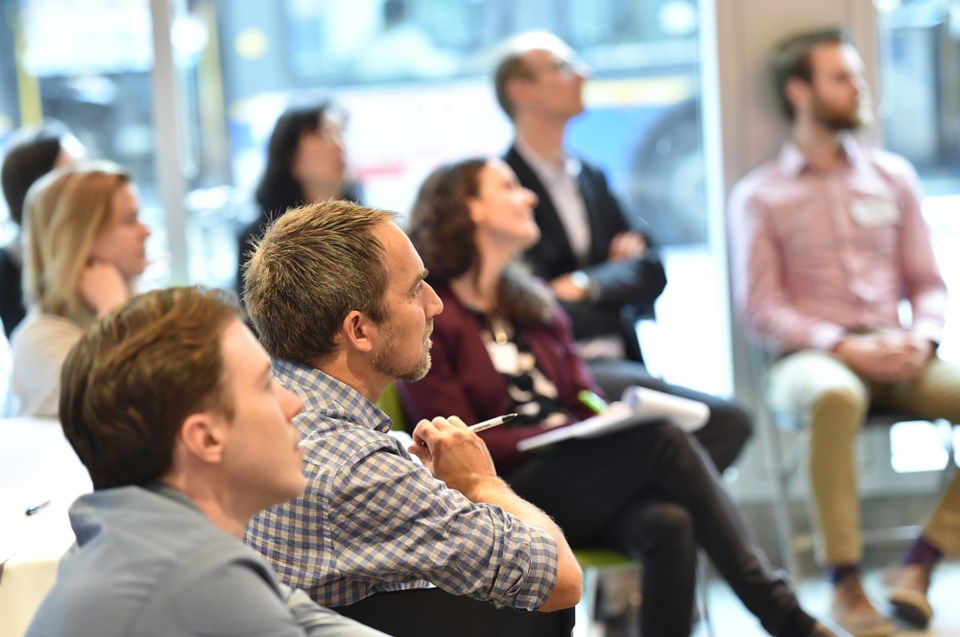It was a dark and unforgivably rainy evening last week, when a reported 130 community members from the Fraser Street neighbourhood packed into the Polish Community Hall near King Edward Avenue. The hall was outfitted with round tables with up to eight people seated at them — each with a suggested discussion topic scribbled on a sheet of paper.
These discussions included building height, housing affordability and even “east-west equity,” which apparently referred to the comparable amount of building density on Vancouver’s West Side.
The evening was organized by local Member of Parliament Don Davies, and the proceedings were organized by staff and volunteers of the NDP MP.
Naturally, there was a sign-in sheet to record the community members in attendance. And while this event might be viewed as a thinly disguised voter engagement exercise in advance of the 2019 federal election, neighbourhood planning is not the traditional bailiwick of federal politicians.
Davies, I believe, came to organize this gathering motivated by concern over the community’s future. He lives mere blocks away from where the hall is situated and, like me, is raising his family in Vancouver’s storied and highly diverse Fraser Street neighbourhood.
Months back I met the MP on an unrelated matter, when he asked me where I thought Fraser Street was going. Proposed developments in the area were not only increasing building heights, but assembling entire blocks into new multi-family developments mixed with new commercial space.
One six-storey building will be targeted to seniors and will be built on city-owned land. Another large development will feature one, two and three-bedroom market rental apartments, some costing in excess of $3,000 per month.
What is coming to Fraser Street is not unique. We are seeing similar growth happening all around our city today. But the fact that 100-plus people came out on a bleak November night tells me there is a pent-up desire to talk about where the neighbourhood is going.
I recognized many people in the room from previous community engagements. Before 2009 when the Vision government disbanded them, several so-called CityPlan committees existed to shepherd along community visions created for parts of the city such as Kensington-Cedar Cottage (KCC, of which I was a committee member), Riley Park-South Cambie and Dunbar.
Each committee was supported by a city staff liaison who worked for the planning department.
KCC (which includes a large portion of Fraser Street) and Dunbar were the first two neighbourhoods in the mid-1990s that completed community visions through the CityPlan planning process.
Though the plans provided a roadmap for new housing types, such as rowhouses, that would allow the communities to densify, surprisingly few single-family blocks gave way to multi-family developments.
Davies himself used the fact that no one had updated Fraser Street’s community vision in over 20 years as a basis for his meeting at the Polish Hall.
It is true that the development happening in this community, like so many others, is being driven in part by zoning policy and by the real estate market. But as for the community itself, they have been largely absent from the conversation.
Some urban thinkers disdain community consultations for the delays it can cause and downward pressure it can bring on density. It is true that an unruly crowd can make it difficult to advocate for change.
The reason I believe city governments put a lid on consultations is that they stir up local controversy.
However, one public official said embracing controversy is better because it means people are paying attention. Councillor Robert Liberty from Portland, Ore. — who spoke in Â鶹´«Ă˝Ół»11 years ago this month — argued that you want the public to have their say, provided the conversation remains civil.
Meetings like the one Davies hosted are not a walk in the park. Many in the room were clearly frustrated by the city’s current direction. Getting to a coherent consensus would be a difficult challenge.
However, the community is well-served by these opportunities to meet face to face with neighbours, to sound off and to listen in a room with their peers, rather than through their smartphone or computer.
Which is why we should be doing more to engage communities about our city’s future.



